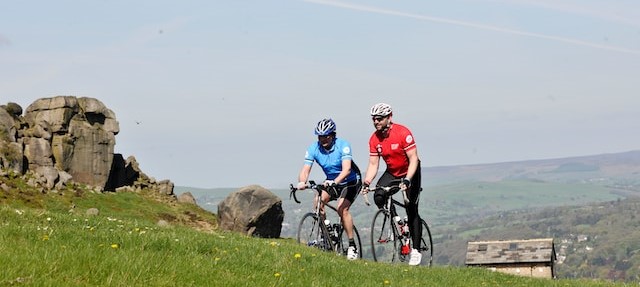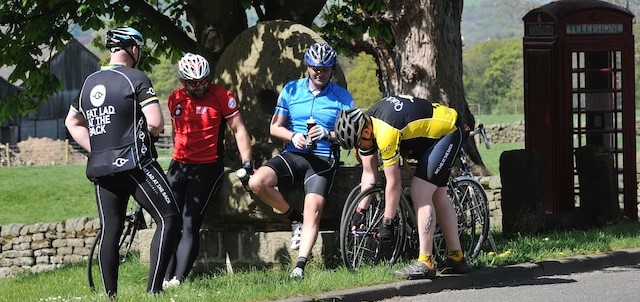Cycling has become more than just a mode of transportation; it’s a cultural phenomenon that has taken the United Kingdom by storm. From the bustling streets of London to the serene landscapes of the countryside, the sight of cyclists pedaling away is a common and cherished aspect of the UK’s lifestyle. So, is cycling popular in the UK? The resounding answer is yes, and the reasons behind its popularity are as diverse as the cyclists themselves.
Urban Cycling: Navigating City Streets on Two Wheels
In the heart of cities like London, cycling has emerged as a favored means of transportation. The compact nature of urban areas, coupled with efforts to promote sustainable travel, has contributed to the popularity of cycling. Commuters navigate busy streets, bypassing traffic jams, and reaching their destinations efficiently. The advent of dedicated cycling lanes and bike-sharing programs has further fueled the urban cycling revolution, making it accessible and appealing to a broad demographic.
Cycling as a Fitness Craze: Pedaling for Health and Well-being
Beyond the urban landscape, cycling has become a national fitness craze. The UK’s emphasis on health and well-being has spurred a surge in recreational and fitness cycling. From leisurely rides through scenic parks to intense mountain biking adventures, cyclists of all levels find joy in the physical and mental benefits of pedaling. The government’s initiatives to promote an active lifestyle have resonated with the public, contributing to the popularity of cycling as a form of exercise.

Cycling Events and Culture: A Calendar Full of Two-Wheeled Festivities
The UK boasts a vibrant cycling culture, punctuated by a calendar full of events that cater to cyclists of various interests. From the iconic London to Brighton Bike Ride to the challenging Tour de Yorkshire, cycling events draw participants and spectators alike. These events not only showcase the competitive spirit of cycling but also foster a sense of community and camaraderie among participants. The popularity of such events highlights the diverse and inclusive nature of the cycling culture in the UK.
Government Initiatives: Paving the Way for Pedals
Government initiatives have played a pivotal role in promoting cycling as a popular mode of transport. Investments in cycling infrastructure, including dedicated lanes, bike racks, and repair stations, create a cyclist-friendly environment. Furthermore, campaigns encouraging cycle-to-work schemes and the introduction of e-bikes have added momentum to the cycling movement. These initiatives not only make cycling more accessible but also contribute to reducing the carbon footprint and easing traffic congestion.
The Appeal of Scenic Routes: Cycling Through Nature’s Beauty
The UK’s diverse landscapes, ranging from coastal paths to expansive moors, provide a picturesque backdrop for cyclists. Exploring the countryside on two wheels has become a favorite pastime, attracting enthusiasts seeking both a physical challenge and a connection with nature. Scenic routes like the Camel Trail in Cornwall or the Loch Ness 360 Trail in Scotland offer cyclists an immersive experience, contributing to the widespread popularity of cycling beyond urban centers.

Cycling as a Social Activity: Riding Together, Building Bonds
Cycling has evolved into a social activity that brings people together. Joining cycling clubs or group rides provides not only a chance to share the joy of riding but also an opportunity to forge friendships. The social aspect of cycling is particularly evident in community-led initiatives, where neighbors organize group rides or family cycling events, fostering a sense of belonging and unity.
The Rise of Cycling Cafés: Where Bikes and Brews Converge
Cycling cafés have become hubs of activity, where cyclists converge to refuel and socialize. These establishments cater specifically to the cycling community, offering a space to discuss routes, share experiences, and celebrate the shared passion for two-wheeled adventures. The rise of cycling cafés reflects the integration of cycling into the fabric of daily life, creating spaces that cater to the needs and interests of the cycling community.
Conclusion: Pedaling into the Future
In conclusion, cycling’s popularity in the UK extends far beyond a mode of transportation or a fitness routine—it has become a cultural phenomenon deeply embedded in the fabric of society. The combination of government support, a diverse landscape, thriving cycling events, and a growing sense of community has propelled cycling into the hearts and minds of people across the nation. As the wheels keep turning and more cyclists take to the roads and trails, the popularity of cycling in the UK shows no signs of slowing down, promising a future where two-wheeled adventures continue to shape the nation’s lifestyle.

